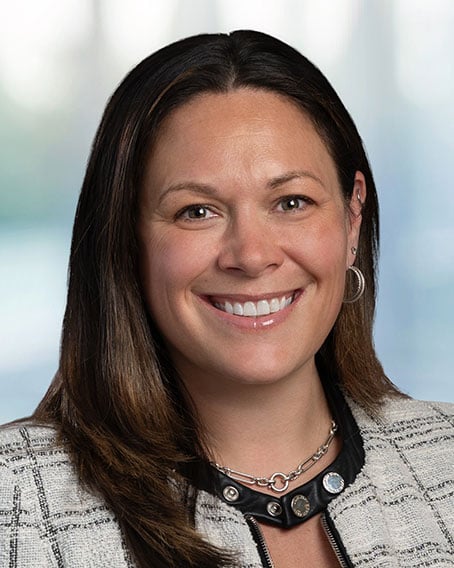In this episode of Fully Invested, Ropes & Gray asset management attorneys Jason Brown, Bryan Hunkele, Joel Wattenbarger and Alyssa Horton provide a brief introduction to Form ADV, including the requirements for filing, timing considerations and the various components of the document. They also discuss regulatory and policy requirements of Form ADV, as well as some common misconceptions for first-time filers.
Transcript:
Jason Brown: Sure. Form ADV is the form that investment advisers use to register with the SEC. It’s the form that exempt-reporting advisers use to file a required notice filing with the SEC. And it has to be updated from time to time. The Form ADV itself consists of several parts:
- There’s Part 1A, which is fill-in-the-blank. I think of it as “name, rank, and serial number”-type information: Data about the adviser, its assets under management, certain of its practices, information about its private funds—again, all very fact-based.
- Then there is Part 2A, which is also known as "the brochure." The Part 2A is narrative. It addresses concepts like investment strategies, investment risks, fees and expenses, conflicts of interest. And it's all in a narrative format.
- There's also Part 2B, which is information about certain investment personnel.
- And then, for advisers with retail clients, there's also a Part 3.
Bryan Hunkele: Got it—that’s very helpful. Thank you. Alyssa, who has to file a Form ADV, and when do they have to file it?
Bryan Hunkele: Joel, what are the policy reasons behind the filing requirement and the substance of the filing?
Joel Wattenbarger: There’s, big-picture, two policy reasons, and these are probably pretty self-evident even just from the description of the Form, but the first is: Just for the SEC to gather information about investment advisers over which it has some degree of authority. It uses that information in a couple of different ways. One is: It aggregates that information—it reports out, on an annual basis, aggregate information about the investment adviser industry in the U.S., and it relies on data provided on Form ADV to do so. But it also uses the information it receives on Form ADV to determine which advisers will be subject to exam and on what frequency that the SEC determines who it will examine, based on a risk assessment. That risk assessment, in the first instance, is based on information that's been provided by the advisers themselves on the Form ADV. And the information on Form ADV also very much informs the sorts of issues that the SEC will look at on any particular exam of any particular investment adviser, registered investment adviser or exempt reporting adviser. So, that's policy reason number one.
Policy reason number two is really: It is a disclosure document. Jason already spoke at length about the Part 2A, which is the client brochure section of Form ADV, but the SEC used that document as an essential disclosure document to clients of registered investment advisers, as well as investors and private funds managed by registered investment advisers. And so, it's very important that investment advisers really give careful attention to the information that is provided to their investors on Part 2A, ensure that the disclosures they make on Part 2A are consistent with the disclosures they make in their fund offering documents, and that they are regularly updated to reflect changes in the adviser's business. We see those disclosures in Part 2A play a very important role, both in exams and in defense against enforcement matters and enforcement investigations initiated by the SEC, so it's just a critical disclosure document in that respect.
Bryan Hunkele: Thanks for that, Joel. Jason, what are the material risks of non-compliance, either not filing the Form ADV or filing it in a way that doesn't include all the relevant information or is misleading in another way?
Jason Brown: This, as you said, breaks into two different sections. One is: What if you don't file at all? The filing is necessary to become a registered investment adviser, and if you're an investment adviser who should be registered, and you're not, the SEC takes that very seriously. And the SEC has a range of options available to it. It could follow up and say, "You need to register as an adviser," at one end. On the other end, it could follow up and say, "We're bringing an enforcement action against you. We're going to bring a suit against you, and there will be fines and other penalties, and it will be public, because you should have filed as an investment adviser and didn't."
Similarly, with respect to the content itself, that can also range greatly how the SEC would react to it if there were any issues. Typically, once you're registered, that comes up on an exam. The SEC examines advisers from time to time, and part of that exam will involve the SEC reviewing your ADV. Again, it can range from the most minor of things—little technicalities where the wrong box was checked, other areas where the SEC thinks perhaps you could have provided a more fulsome answer (and those might be deficiencies on an exam). On the other hand, if there are more material misstatements or if there are material omissions, the SEC can also use that as grounds—they could provide you with a deficiency, but they could also bring an enforcement action, as well. And they have a lot of discretion when it comes to that, so it is really critical to be filling out those forms correctly and, especially in the Part 2A, to make sure that, again, you have all the material information that's required and that it is accurate.
Bryan Hunkele: So, we've established that it's an important thing to do, and we want to make sure we do it timely and with appropriate disclosure. Alyssa, can you talk a little bit about the process for first-time registrants—what that looks like, and in particular, what it looks like next to a potential fundraise?
Alyssa Horton: Sure. Essentially, in order to register, there are two steps that advisers need to be thinking of. The first is completing the Form ADV, which is the registration document, like we said. The second step is to put into place the full infrastructure of a compliance program, and that actually typically takes a lot longer, in terms of timing, than actually completing the Form ADV documents themselves. So, what this means is firms will need to hire a CCO—they’ll need to get in place their reporting processes, their recordkeeping processes, and make sure they really understand all of the obligations that'll be imposed upon them under the Advisers Act. For a lot of new advisers in a first-time fundraise, this also means maybe interviewing and hiring compliance consultants to help them with the process. But it's important to understand, too, that there are timing considerations that interplay with the fundraise.
As we noted, you need to be fully registered by the time you have a first close. After you make a Form ADV filing, the registration doesn't happen automatically—the SEC has 45 days to either grant your registration, to ask questions, or to come back with any concerns. So, you need to factor that window into your fundraising and first close. But it's also important to understand that the SEC can also grant registration earlier. It doesn't often happen, but they could grant it after one week of filing, so you need to be ready to act as a fully registered adviser once you make the filing. I guess the question is then, "Why not just make a filing as soon as you start thinking about fundraising, and then just wait until you have a first close?" Lovely idea, but you need a basis for registration, and for most first-time advisers, there's the ability to register if you expect to have the necessary regulatory assets under management within 120 days of filing. Essentially, within four months of making the Form ADV filing, you expect to have the full $100 million in RAUM, and you can be a fully registered adviser. So, you essentially need to time your first close within a window that you expect to be granted full registration and you will have the necessary RAUM. Again, it's a little bit of a funny timing thing, and it's just something to be mindful of. Folks can often get extensions if their first closes do get pushed back, but as folks are fundraising, and this might not be totally front of mind, it is something that people still need to be thinking about.
Bryan Hunkele: Thank you. Joel, once we've registered, what are the obligations an investment manager would have, going forward, to update its Form ADV? How often does it update? And how substantive are those updates?
Joel Wattenbarger: Sure. There are two types of updates to Form ADV: One is an annual amendment, and the other is an other-than-annual amendment. The annual amendment is just what it says—it’s an annual refresh to the Form ADV. It needs to be filed each year within 90 days after an adviser's fiscal year ends. And since most advisers have a calendar-year fiscal year, this is why March is every regulatory lawyer's least favorite month. But that is just a full refresh where you just update all of the information on every part of the Form ADV.
Then, there are other-than-annual amendments—there are certain changes to an investment adviser's business that require an adviser to file a prompt amendment to Form ADV, even though it otherwise could wait until its annual amendment to update the information on its Form ADV. And some of those are fairly intuitive things like if there's been a new disciplinary event, with respect to the adviser or supervised persons that needs to be reported, or if the adviser has changed office locations. On the other hand, if the adviser raises a new $10 billion private fund that has the same strategy as a previous fund managed by the adviser, that typically wouldn't require a prompt amendment. So, really it's just one of those things where, if you're an investment adviser or you're a registered adviser, and there's some sort of change to your business, it's worth just checking with your lawyer or your compliance consultant, and just ask the question, "Is this a change that's going to require me to file a prompt other-than-annual amendment?" And that's really all there is to it.
Bryan Hunkele: Thanks, Joel. Jason, the Form ADV, and particularly the brochure, tends to look a little like a fund's offering material. So, what is the interplay or interaction between the Form ADV and a registrant's fund's offering materials? Which one controls? How does one impact the other? And when you're updating the Form ADV on an annual basis, do you take into account changes you've made in your offering materials over the year?
Jason Brown: It's a great question. I think it's fair to say the two are really designed to be read in tandem. There are certainly some overlaps between what would typically appear in offering materials and what would typically appear in Form ADV: investment strategies, investment risks, conflicts of interest. And what we have found is a couple of things. One is: It is critical to make sure that they are consistent. That doesn't mean that they both have to be carbon copies of each other, but a discussion of strategy in the ADV should be consistent with a discussion of strategy in your offering materials. Now, different registrants do this differently. Some will have the ADV and offering materials be largely the same, but most firms that I work with will have some differences. For example, it's quite common that the risk-factor section in the offering materials is going to be a lot longer and a lot more detailed than the investment-risk section in the ADV. On the other hand, it's not uncommon for the conflicts-of-interest section in the ADV to be longer than the conflicts section in the offering materials. In our experience on exam, so long as the Form ADV is provided to investors before a fund closing, then, in effect, the SEC gives you credit for both the disclosure you might have in, say, a PPM and the disclosure that you might have in an ADV. And so, again, in that sense, I think they can be read together as supporting each other.
Then, with respect to annual updates: absolutely. If there are changes in investment strategies or other changes that are reflected in updated offering materials, those should definitely be reflected as part of the regular updating of Form ADV.
Bryan Hunkele: Thank you. Alyssa, just one final question, I guess, which is: What are some common mistakes or misconceptions that new or existing registrants have about Form ADV (maybe some things you've seen where a client's expectations are a little different from the reality of the Form and the obligation)?
Alyssa Horton: Thanks, Bryan. I think probably the biggest misconception is really a big-picture issue, and that's that folks should really just go ahead and complete the ADV without consulting with advisers, legal counsel and stuff like that. While folks may just think that you're responding to basic questions, the Form ADV's a pretty complicated document—it's filled with defined terms, there are a lot of nuances, SEC guidance, FAQs, risk alerts, and stuff that we have seen on exams, that really inform how certain questions should be responded to. In particular, with respect to the brochure, the Part 2A, I think legal counsel can be very helpful in understanding how certain conflicts should be disclosed, how folks should think about disclosing certain things, and just what's market practice in terms of different approaches. So, I think to go at the ADV by yourself is probably one of the bigger mistakes that we see folks make, and we'd really encourage people to carefully consider this and work with your advisers when faced with filing this for the first time or at your annual and other-than-annual amendments.
Bryan Hunkele: Thank you for that. And thank you, Jason, Alyssa, and Joel for joining me for this discussion. Thank you to our listeners—we appreciate you tuning in to Ropes & Gray's Fully Invested podcast series. Please visit our website at www.ropesgray.com/assetmanagement, or feel free to reach out to any of us at Ropes & Gray by email or phone for more information. You can also subscribe to this Ropes & Gray series wherever you typically listen to podcasts, including on Apple and Spotify. Thanks again for listening.
Speakers
Stay Up To Date with Ropes & Gray
Ropes & Gray attorneys provide timely analysis on legal developments, court decisions and changes in legislation and regulations.
Stay in the loop with all things Ropes & Gray, and find out more about our people, culture, initiatives and everything that’s happening.
We regularly notify our clients and contacts of significant legal developments, news, webinars and teleconferences that affect their industries.






